How Electric Transformers Work: A Step-by-Step Explanation for Beginners?
Have you ever wondered how electricity from a power plant reaches your home at a usable voltage? Or why your phone charger doesn’t fry your device? The answer lies in a crucial device called an electric transformer. But how exactly does this mysterious box work its magic?
An electric transformer works by transferring electrical energy between circuits using electromagnetic induction. It uses primary and secondary windings wrapped around a magnetic core. This step-by-step guide explains how voltage increases or decreases as electricity flows through the transformer—ideal for beginners learning how transformers work. Understanding this process is key to grasping the fundamentals of power distribution and electrical engineering.
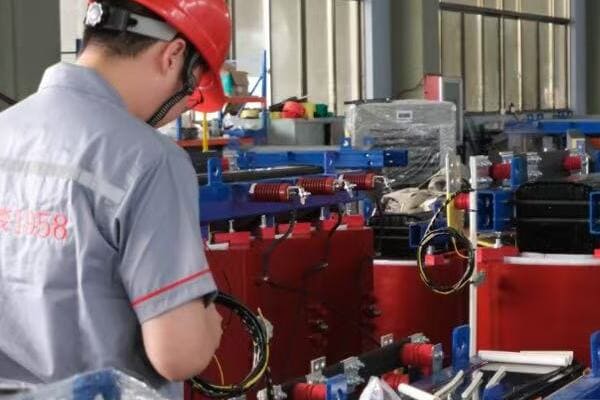
In this comprehensive guide, I’ll walk you through the inner workings of electric transformers, breaking down complex concepts into easy-to-understand steps. Whether you’re a curious student, a DIY enthusiast, or someone looking to understand the basics of power systems, this article will provide you with a clear understanding of how these essential devices function.
What Is an Electric Transformer?
Have you ever plugged in a device from another country and wondered why you need an adapter? The answer lies in the world of electric transformers. But what exactly is a transformer, and why is it so important in our daily lives?
An electric transformer is a static device that transfers electrical energy between two or more circuits through electromagnetic induction. It can increase or decrease the voltage of an alternating current (AC) while keeping the power relatively constant. Transformers are crucial in power distribution systems, allowing electricity to be efficiently transmitted over long distances and safely used in our homes and devices.
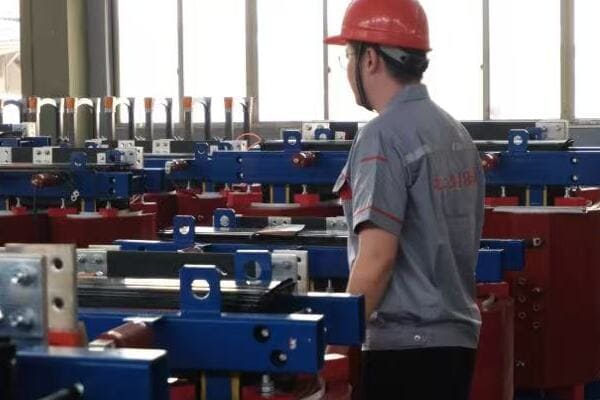
Understanding Electric Transformers
Let’s break down the key aspects of transformers:
- Basic Definition and Function
- Types of Transformers
- Key Components
- Real-World Applications
- Importance in Power Systems
Basic Definition and Function
A transformer is like a voltage converter:
- It changes the voltage of AC electricity
- It doesn’t create or use up energy (ideally)
- It works through electromagnetic induction
I often explain transformers to beginners by comparing them to gears in a bicycle. Just as gears can trade speed for power, transformers trade voltage for current.
Types of Transformers
Transformers come in various forms:
- Step-up transformers (increase voltage)
- Step-down transformers (decrease voltage)
- Isolation transformers (maintain voltage but provide electrical isolation)
During a recent workshop, I demonstrated these types using small model transformers, helping students visualize the differences.
Key Components
Essential parts of a transformer include:
- Primary winding (input coil)
- Secondary winding (output coil)
- Iron core (for magnetic flux)
- Insulation and cooling system
Here’s a simple overview of transformer components:
| Component | Function | Analogy |
|---|---|---|
| Primary Winding | Receives input AC | Bicycle pedal |
| Secondary Winding | Delivers output AC | Rear wheel |
| Iron Core | Transfers magnetic flux | Bicycle chain |
| Insulation | Prevents short circuits | Bike’s frame |
Real-World Applications
Transformers are everywhere:
- Power distribution grids
- Home appliances (e.g., microwave ovens)
- Electronic device chargers
- Industrial machinery
Importance in Power Systems
Transformers are crucial because they:
- Enable efficient long-distance power transmission
- Allow voltage to be adjusted for different uses
- Provide electrical isolation for safety
Key points about electric transformers:
- They change AC voltage levels
- They work through electromagnetic induction
- They’re essential for power distribution and device operation
- They come in various types for different applications
- They don’t create or consume power (in an ideal scenario)
In my experience, understanding transformers is a gateway to grasping broader concepts in electrical engineering. I recall a student who struggled with electrical theory until we dissected an old transformer. Seeing the physical components and how they interacted made the abstract concepts click for her.
For instance, during a recent field trip to a local substation, I showed my students how massive transformers step down high transmission voltages to levels suitable for neighborhood distribution. This real-world example helped them appreciate the scale and importance of transformer technology in our daily lives.
As we move on to discuss the basic principle of electromagnetic induction, keep in mind that this fundamental concept is what makes transformers possible. Understanding this principle will help you grasp how transformers can change voltage levels without direct electrical connections.
The Basic Principle: Electromagnetic Induction?
Have you ever been curious about the invisible force that makes transformers work? The key lies in a fascinating phenomenon called electromagnetic induction. But what exactly is this principle, and how does it enable transformers to manipulate electricity?
Electromagnetic induction is the process by which a changing magnetic field creates an electric current in a nearby conductor. In transformers, this principle allows energy to be transferred between separate coils without direct electrical contact. When alternating current flows through the primary coil, it creates a changing magnetic field. This field then induces a voltage in the secondary coil, enabling the transformer to change voltage levels efficiently.
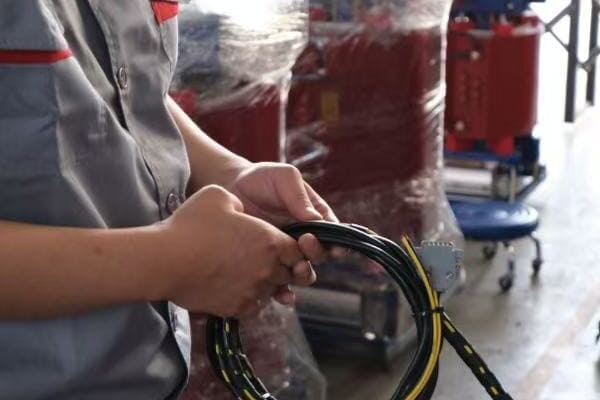
Exploring Electromagnetic Induction
Let’s break down the key aspects of this principle:
- Faraday’s Law of Induction
- The Role of Changing Magnetic Fields
- Importance of Alternating Current (AC)
- Mutual Induction in Transformers
- Factors Affecting Induction Efficiency
Faraday’s Law of Induction
The fundamental law behind transformers:
- A changing magnetic field induces voltage in a conductor
- The induced voltage is proportional to the rate of change of the magnetic field
- This law explains how energy transfers between transformer coils
I often demonstrate Faraday’s Law using a simple hand-crank generator. As students turn the crank, they can see how mechanical motion creates electricity through changing magnetic fields.
The Role of Changing Magnetic Fields
Key to transformer operation:
- A steady magnetic field doesn’t induce current
- Only changes in the magnetic field create induction
- The faster the change, the stronger the induced voltage
During a recent lab session, we used an oscilloscope to visualize how changing the speed of a rotating magnet affects the induced voltage in a nearby coil.
Importance of Alternating Current (AC)
Why transformers use AC:
- AC naturally creates a changing magnetic field
- The sinusoidal nature of AC allows for continuous induction
- DC (Direct Current) doesn’t work in traditional transformers
Here’s a simple comparison of AC and DC in transformers:
| Current Type | Magnetic Field | Induction | Transformer Use |
|---|---|---|---|
| AC | Constantly changing | Continuous | Ideal |
| DC | Static | None (in steady state) | Not suitable |
Mutual Induction in Transformers
How coils interact:
- Primary coil creates a changing magnetic field
- This field is concentrated by the iron core
- Secondary coil experiences this changing field, inducing voltage
Factors Affecting Induction Efficiency
Elements that influence transformer performance:
- Number of turns in each coil
- Core material and design
- Frequency of the AC supply
- Proximity and alignment of coils
Key points about electromagnetic induction in transformers:
- It’s based on Faraday’s Law of Induction
- Changing magnetic fields are crucial for operation
- AC is essential for continuous transformer function
- Mutual induction allows energy transfer between coils
- Various factors can affect the efficiency of induction
In my experience, grasping the concept of electromagnetic induction is a eureka moment for many students. I remember a particular demonstration where we used a large electromagnet and a copper ring. When we suddenly changed the electromagnet’s field, the ring jumped into the air, visibly demonstrating the power of induced currents.
For example, in a recent workshop on renewable energy, we explored how the principle of electromagnetic induction is applied not just in transformers but also in wind turbines and hydroelectric generators. This broader context helped students appreciate the wide-ranging applications of this fundamental principle.
As we move on to discuss the core components of transformers, keep in mind how each part plays a role in facilitating or enhancing electromagnetic induction. Understanding this underlying principle will help you see how the physical structure of a transformer is designed to maximize the efficiency of this invisible yet powerful phenomenon.
Core Components and Their Roles?
Have you ever wondered what’s inside a transformer that allows it to perform its voltage-changing magic? Understanding the core components of a transformer is crucial to grasping how these devices work. But what are these components, and how does each contribute to the transformer’s function?
The core components of a transformer include the primary winding, secondary winding, magnetic core, and insulation. The primary winding receives the input AC voltage, creating a magnetic field in the core. This field induces a voltage in the secondary winding, which delivers the output. The magnetic core, usually made of laminated steel, concentrates the magnetic flux. Insulation prevents short circuits and ensures safety. Each component plays a vital role in the transformer’s efficiency and functionality.

Examining Transformer Components
Let’s explore the key components and their roles:
- Primary Winding
- Secondary Winding
- Magnetic Core
- Insulation and Casing
- Additional Features in Modern Transformers
Primary Winding
The input coil of the transformer:
- Receives the incoming AC voltage
- Creates the initial changing magnetic field
- Number of turns affects the voltage ratio
I often use the analogy of a water pump when explaining the primary winding. Just as a pump creates water pressure, the primary winding "pumps" magnetic energy into the system.
Secondary Winding
The output coil of the transformer:
- Experiences the changing magnetic field
- Induces the output voltage
- Number of turns determines the output voltage
During a recent lab demonstration, we used transformers with removable windings to show how changing the number of turns in the secondary affects the output voltage.
Magnetic Core
The heart of the transformer:
- Concentrates and directs the magnetic flux
- Usually made of laminated silicon steel
- Shapes can vary (e.g., core-type, shell-type)
Here’s a comparison of common core types:
| Core Type | Description | Best For |
|---|---|---|
| Core-type | Windings around central limb | Smaller transformers |
| Shell-type | Core encloses windings | Larger power transformers |
| Toroidal | Donut-shaped core | Efficient, low noise |
Insulation and Casing
Critical for safety and efficiency:
- Prevents short circuits between windings
- Manages heat dissipation
- Protects internal components from environment
Additional Features in Modern Transformers
Advanced components in some designs:
- Tap changers for voltage adjustment
- Cooling systems (oil or air)
- Monitoring and protection devices
Key points about transformer components:
- Primary winding initiates the electromagnetic process
- Secondary winding delivers the transformed voltage
- Magnetic core is crucial for efficient flux transfer
- Insulation and casing ensure safety and longevity
- Modern transformers may include additional features for performance and control
In my experience, hands-on exploration of these components greatly enhances understanding. I recall a workshop where we disassembled an old transformer. Seeing the layers of windings and the substantial weight of the core made a lasting impression on the participants about the physical reality behind electrical theories.
For instance, during a recent visit to a transformer manufacturing plant, we observed the precision required in winding the coils and assembling the core. This real-world context helped students appreciate the engineering challenges in creating efficient and reliable transformers.
As we move on to discuss the step-by-step working process of a transformer, keep in mind how each of these components plays a crucial role in the overall function. Understanding the physical structure will help you visualize the flow of energy and the transformation of voltage within these essential devices.
Step-by-Step Working Process?
Have you ever wondered about the exact sequence of events that occurs when electricity flows through a transformer? Understanding this process is key to grasping how transformers change voltage levels. But what are the specific steps involved, and how does each contribute to the transformer’s function?
The transformer working process involves four main steps: 1) AC input enters the primary winding, creating a changing magnetic field. 2) This field is concentrated by the magnetic core. 3) The changing field induces a voltage in the secondary winding. 4) The induced voltage in the secondary creates an AC output, with the voltage level determined by the turns ratio of the windings. This process occurs continuously, allowing for constant voltage transformation.

Detailed Working Process of a Transformer
Let’s break down the transformer’s operation into detailed steps:
- AC Input and Primary Winding Excitation
- Magnetic Field Generation in the Core
- Flux Linkage with Secondary Winding
- Voltage Induction in Secondary
- Load Connection and Power Transfer
AC Input and Primary Winding Excitation
The process begins with AC input:
- Alternating current enters the primary winding
- Current flow creates a changing magnetic field around the winding
- The strength of this field varies with the AC frequency
I often use a simple hand-crank generator connected to an LED to demonstrate how changing current creates a magnetic field, making the LED flicker.
Magnetic Field Generation in the Core
The core concentrates the magnetic field:
- Magnetic flux is channeled through the core material
- Core’s high permeability intensifies the magnetic field
- Laminated design minimizes eddy current losses
During a recent lab session, we used iron filings on a plastic sheet over a transformer to visualize the magnetic field lines, showing how they concentrate in the core.
Flux Linkage with Secondary Winding
The magnetic field interacts with the secondary:
- Changing magnetic flux passes through the secondary winding
- This changing flux is key to inducing voltage in the secondary
- The rate of change of flux determines the induced voltage magnitude
Here’s a simplified view of flux linkage:
| Stage | Primary Current | Magnetic Flux | Secondary Voltage |
|---|---|---|---|
| Increasing | Rising | Expanding | Positive |
| Peak | Maximum | Maximum | Zero |
| Decreasing | Falling | Contracting | Negative |
| Zero | None | None | Zero |
Voltage Induction in Secondary
Electromagnetic induction occurs:
- Changing flux induces an electromotive force (EMF) in the secondary
- The induced voltage’s magnitude depends on the turns ratio
- Direction of induced current opposes the change in magnetic flux (Lenz’s Law)
Load Connection and Power Transfer
The transformer delivers power to the load:
- Secondary winding connects to the load circuit
- Induced voltage drives current through the load
- Power is transferred from primary to secondary (minus small losses)
Key points about the transformer working process:
- AC input is crucial for creating a changing magnetic field
- The magnetic core plays a vital role in flux concentration
- Flux linkage between windings is the key to voltage induction
- The turns ratio determines the voltage transformation
- Power transfer occurs with minimal energy loss in an ideal transformer
In my experience, visualizing this process can be challenging for beginners. I often use a water analogy, comparing the primary winding to a pump, the core to a pipe system, and the secondary to a water wheel. This helps students grasp the concept of energy transfer without direct contact.
For example, in a recent demonstration, we used a transparent model transformer with LED indicators in both windings. As we varied the input AC, students could see how changes in the primary immediately affected the secondary, illustrating the real-time nature of the transformation process.
As we move on to discuss the differences between step-up and step-down transformers, keep this step-by-step process in mind. Understanding how a transformer works at its core will help you appreciate the versatility of these devices in various voltage transformation scenarios.
Step-Up vs Step-Down Transformers: What’s the Difference?
Have you ever wondered why some transformers increase voltage while others decrease it? Understanding the difference between step-up and step-down transformers is crucial for grasping how our power systems work. But what exactly sets these two types apart, and how do they affect the electricity we use?
Step-up transformers increase voltage while step-down transformers decrease it. The key difference lies in the number of turns in their primary and secondary windings. Step-up transformers have more turns in the secondary, resulting in higher output voltage. Step-down transformers have fewer turns in the secondary, producing lower output voltage. This distinction is crucial for efficient power transmission and distribution, allowing electricity to be sent over long distances and then safely used in homes and businesses.

Comparing Step-Up and Step-Down Transformers
Let’s explore the key differences and applications:
- Winding Configuration
- Voltage and Current Relationships
- Typical Applications
- Efficiency Considerations
- Design and Construction Differences
Winding Configuration
The core difference lies in the windings:
- Step-Up: Secondary has more turns than primary
- Step-Down: Primary has more turns than secondary
I often use a gear analogy to explain this concept. Like gears in a bicycle, more turns in the secondary is like a larger gear, resulting in higher voltage but lower current.
Voltage and Current Relationships
How voltage and current change:
- Step-Up: Increases voltage, decreases current
- Step-Down: Decreases voltage, increases current
During a recent lab demonstration, we used small transformers to show how increasing voltage in a step-up transformer resulted in a proportional decrease in current, maintaining roughly the same power.
Typical Applications
Where each type is commonly used:
- Step-Up: Power plants, long-distance transmission
- Step-Down: Local distribution, household appliances
Here’s a quick overview of applications:
| Transformer Type | Voltage Change | Common Applications |
|---|---|---|
| Step-Up | Increases | Power plants, Wind farms |
| Step-Down | Decreases | Homes, Offices, Electronics |
Efficiency Considerations
Factors affecting efficiency:
- Both types have similar efficiency principles
- Losses are generally proportional to the transformation ratio
- Cooling becomes more critical in larger step-up transformers
Design and Construction Differences
Physical differences:
- Step-Up: Often larger due to higher voltage insulation needs
- Step-Down: Can be more compact, especially for lower powers
- Both types may have different core designs based on specific applications
Key points about step-up vs step-down transformers:
- The turns ratio determines whether it’s step-up or step-down
- Voltage and current change inversely to maintain power
- Applications vary widely based on the needs of the power system
- Efficiency principles are similar, but practical considerations differ
- Physical design can vary significantly based on voltage levels and use case
In my experience, understanding the difference between these types is crucial for anyone working with electrical systems. I recall a project where a student mistakenly used a step-down transformer in place of a step-up in a solar power system model. The resulting low voltage output helped reinforce the importance of choosing the right transformer type.
For instance, during a recent field trip to a local power substation, we observed both types in action. The massive step-down transformers taking high transmission voltages down to distribution levels provided a stark contrast to the small step-up transformers used in the substation’s own power supply system for control equipment.
As we move on to discuss real-world applications and examples, keep in mind how the choice between step-up and step-down transformers plays a crucial role in the efficient and safe distribution of electricity from power plants all the way to our homes and devices.
Real-World Applications and Examples?
Have you ever stopped to think about how transformers impact your daily life? From the moment you wake up to when you go to sleep, transformers play a crucial role in powering our world. But where exactly do we find these devices, and how do they function in various real-world scenarios?
Transformers are ubiquitous in modern life, found in power grids, household appliances, and electronic devices. In power distribution, large transformers step up voltage for long-distance transmission and step it down for local use. In homes, small transformers in chargers and appliances convert mains voltage to suitable levels for electronics. Industrial applications use transformers for welding, induction heating, and motor control. Understanding these applications helps appreciate the vital role transformers play in our electrified world.
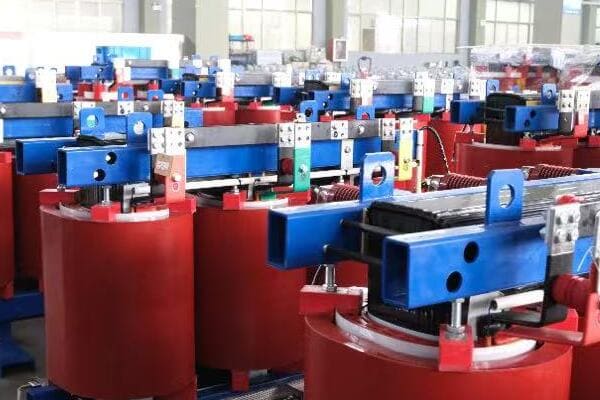
Exploring Transformer Applications
Let’s examine key areas where transformers are essential:
- Power Generation and Transmission
- Residential and Commercial Use
- Industrial Applications
- Transportation Systems
- Renewable Energy Integration
Power Generation and Transmission
The backbone of our electrical grid:
- Step-up transformers at power plants (e.g., 20kV to 400kV)
- Transmission line transformers for long-distance power transfer
- Substation transformers stepping down voltage for distribution (e.g., 400kV to 11kV)
I once visited a hydroelectric plant where the sheer size of the step-up transformers was awe-inspiring, highlighting their crucial role in power distribution.
Residential and Commercial Use
Transformers in our daily lives:
- Distribution transformers in neighborhoods (e.g., 11kV to 240V)
- Small transformers in electronic devices (e.g., phone chargers, laptops)
- Isolation transformers for sensitive equipment in hospitals and labs
During a recent home energy audit, I showed homeowners how even their doorbell uses a small transformer to step down voltage from 240V to a safe 12V.
Industrial Applications
Vital for manufacturing and processing:
- Arc welding transformers
- Induction heating in metal processing
- Variable frequency drives for motor control
Here’s a quick overview of some industrial applications:
| Application | Transformer Type | Purpose |
|---|---|---|
| Arc Welding | Step-down | Provide high current at low voltage |
| Induction Furnace | Special design | Create eddy currents for heating |
| Motor Control | Variable voltage | Adjust motor speed and torque |
Transportation Systems
Powering our mobility:
- Traction transformers in electric trains
- Charging stations for electric vehicles
- Airport ground power units for aircraft
Renewable Energy Integration
Essential for clean energy:
- Step-up transformers in wind turbines
- Inverter transformers in solar farms
- Grid integration transformers for renewable sources
Key points about real-world transformer applications:
- Transformers are crucial in power generation and transmission
- They’re found in numerous household and commercial devices
- Industrial processes rely heavily on specialized transformers
- Transportation systems use transformers for power conversion
- Renewable energy systems require transformers for grid integration
In my experience, helping people recognize transformers in their everyday lives often leads to a greater appreciation of electrical engineering. I remember conducting a "transformer scavenger hunt" with a group of students, challenging them to identify as many transformers as possible in their homes and neighborhood. The results were eye-opening, with students finding transformers in places they’d never considered before.
For example, during a recent consultation for a smart home project, we discussed how modern home automation systems often incorporate multiple small transformers. From smart doorbells to LED lighting controllers, these devices rely on transformers to operate safely and efficiently.
As we conclude our exploration of transformers, it’s clear that these devices are fundamental to our electrified world. Their ability to change voltage levels efficiently and safely enables the complex power systems we rely on every day, from massive power grids to the smallest electronic gadgets.
Leading Transformer Brands for Educational Use
Are you looking for reliable transformer brands to use in educational settings? Choosing the right equipment is crucial for effective learning and hands-on experience. But which brands offer the best balance of quality, safety, and educational value for students and trainees?
For educational use, leading transformer brands include CHBEB, Schneider Electric, and ABB. CHBEB offers simplified learning kits popular in Southeast Asian and African technical schools. Schneider Electric provides globally trusted lab-grade models ideal for university engineering departments. ABB’s modular demonstration units are widely used in smart grid courses and professional certification programs. These brands offer a range of options suitable for various educational levels and training needs.
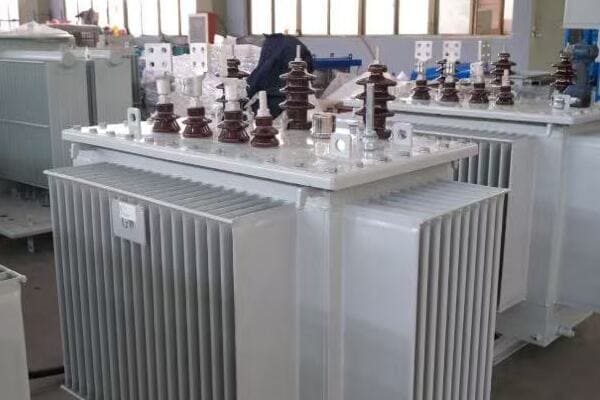
Analyzing Top Brands for Educational Transformers
Let’s explore the strengths of leading brands:
- CHBEB
- Schneider Electric
- ABB
- Key Features for Educational Use
- Choosing the Right Brand for Your Needs
CHBEB
Strengths in educational settings:
- Simplified learning kits for emerging markets
- Compact dry-type transformers with clear labeling
- Popular in Southeast Asian and African technical schools
I recently observed a CHBEB demo transformer with a transparent casing being used in a Kenyan vocational school, allowing students to visualize core magnetic coupling clearly.
Schneider Electric
Notable features for education:
- Miniature Distribution Transformers certified to IEC/UL standards
- Used in academic labs globally
- Supports both step-up and step-down scenarios
During a workshop in a Middle Eastern university, I was impressed by Schneider’s plug-and-play modules that allowed students to quickly set up various transformer configurations.
ABB
Key advantages for learning environments:
- Modular demonstration units with removable covers
- Strong focus on renewable energy learning modules
- Popular in professional certification courses
Here’s a quick comparison of these educational transformer brands:
| Brand | Type | Output Range | Region Popularity | Ideal For |
|---|---|---|---|---|
| CHBEB | Dry-type demo | 220V–400V | Africa, Southeast Asia | Vocational training |
| Schneider | Mini DTR Kits | 120V–480V | Europe, Latin America | University labs |
| ABB | Modular Lab Set | 240V–600V | India, Middle East | Smart grid courses |
Key Features for Educational Use
Important aspects for learning:
- Clear visual components and labeling
- Safety features for student use
- Flexibility to demonstrate various concepts
- Durability for repeated use
Choosing the Right Brand for Your Needs
Factors to consider:
- Educational level (vocational, university, professional)
- Specific curriculum requirements
- Budget constraints
- Regional availability and support
Key points about educational transformer brands:
- CHBEB excels in simplified, cost-effective learning kits
- Schneider Electric offers globally recognized lab-grade models
- ABB provides advanced modules for specialized courses
- Clear visuals and safety features are crucial for educational use
- Choice depends on specific educational needs and regional factors
In my experience, the right educational transformer can make a significant difference in students’ understanding. I recall a community college that switched to CHBEB’s transparent models, resulting in a noticeable improvement in students’ grasp of transformer principles.
For instance, during a recent training program for utility workers in Brazil, we used Schneider Electric’s mini distribution transformer kits. The ability to safely simulate various fault conditions proved invaluable in preparing technicians for real-world scenarios.
Remember, when selecting transformers for educational use, it’s not just about the brand name. Consider how well the equipment aligns with your curriculum, safety requirements, and the level of hands-on experience you want to provide to your students or trainees.
Conclusion
Electric transformers are fundamental to our power systems, enabling efficient electricity transmission and distribution. Understanding their working principle, components, and types is crucial for anyone interested in electrical engineering. From power grids to household devices, transformers play a vital role in our electrified world, highlighting their importance in both education and practical applications.
Remember, at chbeb-ele, we’re not just sharing information – we’re empowering you to be part of the solution in creating a secure, clean, and efficient energy future. Let’s continue this journey together.
Free CHBEB Transformer Catalog Download
Get the full range of CHBEB transformers in one catalog.
Includes oil-immersed, dry-type, pad-mounted, and custom solutions.
Quick Message
Request A free quote
We'd like to work with you
- +86 15558785111
- [email protected]
- +86 15558785111
What We Do
CHINA BEI ER BIAN (CHBEB) GROUP, with 218 million in registered capital, originated from Beijing Beierbian Transformer Group. Headquartered in Beijing for R&D, it operates major production bases in Nanjing and Yueqing, producing high-quality products.
Latest Product
address
BeiJing
No 3,RongJing East Road,BeiJing Economic Technological Development Area,BeiJing,China
JiangSu
No 7️Xiangfeng Road,Jiangning,NanJing,JiangSu,China
WenZhou
No.211, Wei 16 Road, Industrial Zone, Yueqing, Wenzhou, Zhejiang, China.
XiangYang Industrial Zone ,YueQing,WenZhou,ZheJiang,China
contact us
- [email protected]
- +86 13057780111
- +86 13057780111
- +86 15558785111
Copyright © Bei Er Bian Group


